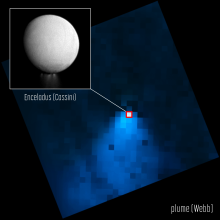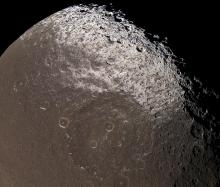Listen to today's episode of StarDate on the web the same day it airs in high-quality streaming audio without any extra ads or announcements. Choose a $8 one-month pass, or listen every day for a year for just $30.
You are here
Saturn Opposition III
Nothing lasts forever. That appears to include the rings of Saturn. They could disappear in as little as a hundred million years. Considering Saturn’s age of four and a half billion years, that’s not long.
Scientists have debated the age of the rings for decades. Some say the rings formed along with Saturn itself. But the Cassini spacecraft, which orbited Saturn for more than a decade, found evidence that they could be as little as a hundred million years old. They may be debris from a collision that destroyed a small moon or a passing comet.
At the end of its mission, Cassini passed between Saturn and the inner edge of the rings. It found that material is “raining” from the rings into Saturn’s atmosphere. Most of the rain consists of tiny bits of ice, which makes up the bulk of the rings, but it also includes grains of dust.
If the rainfall rate holds steady, the rings could disappear in anywhere from a hundred million to a few hundred million years. But the rings could be refreshed by more collisions between moons, comets, or asteroids. So we can’t be sure how long the rings will last — only that they won’t last forever.
Saturn is at its best for the year right now. It rises at sunset and is in view all night, in Aquarius. It’s brightest for the year as well, so it looks like a bright golden star. Look for it low in the east-southeast at nightfall, and scooting across the south during the night.
Script by Damond Benningfield






